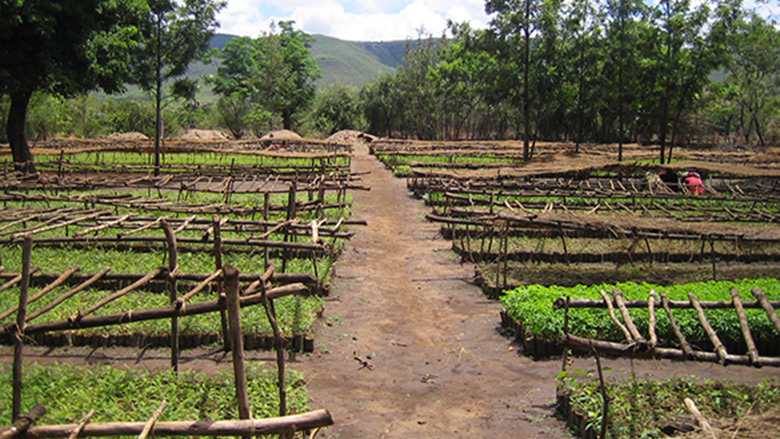DESCRIPTION
The Ethiopia Humbo Assisted Natural Regeneration project has taken a community-based approach to land restoration. In less than four years, the project near the town of Humbo in the mountainous region of southwestern Ethiopia has engaged local farmers in seven community cooperatives to manage a land regeneration initiative. They have built natural fences to reduce the pressure on vegetation from grazing and pruned existing trees and shrubs for sustainable wood fuel collection.
The project, supported by the World Bank’s BioCarbon Fund, has restored 2,700 hectares of previously degraded soil and boosted crop yields. It is a model for farmer-managed natural regeneration efforts in Niger, Chad, and Burkina Faso.
CONTEXT
Estimates show that Ethiopia has less than 2.7 percent of its original high forests, with about 40,000 hectares (or 0.8 percent) of total forest cover lost between 1995–2000. The loss of forest cover has had an adverse effect on both biodiversity and the livelihoods of local communities.
RESULTS AND ACHIEVEMENTS
- In less than four years, the BioCarbon Fund Humbo Assisted Natural Regeneration project has restored 2,700 hectares of land in Ethiopia.
- The project engaged seven community cooperatives in a natural land regeneration initiative.
- Carbon payments are made to the community to invest in grain mills, storage and community infrastructure.
- The project has been a model for farmer-managed natural regeneration efforts in Niger, Chad and Burkina Faso; these new projects have been implemented on over two million hectares of land.
- The project’s community-based approach has strengthened sustainable connections between the local community and the land. The project has made a lasting environmental impact and generated emission reductions that provide revenue that is invested back into local communities.
- The area is now providing a refuge for local and migratory species because of the regeneration of native vegetation and the connection of previously fragmented forests.

